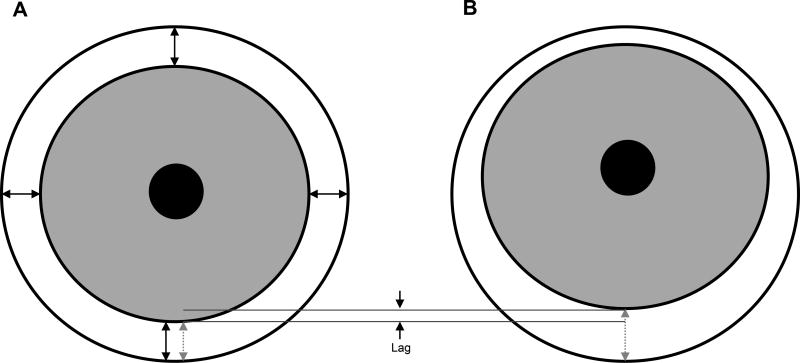Figure 1.
The black arrows in Figure 1 (A) illustrate centration; if all distances between limbus and contact lens edge are equal in primary gaze, the lens is centered perfectly. The lens is considered to be decentered in the direction of the largest distance between the lens edge and the limbus. For example, if the superior distance is greater than the inferior distance while in primary gaze, then the lens is decentered superiorly. The difference between the gray arrows indicated in Figures 1 (A) and (B) represents contact lens lag. For example, the gray arrow is longer in up gaze (B) than it is in primary gaze (A), and that difference is the amount of lag of the contact lens.

